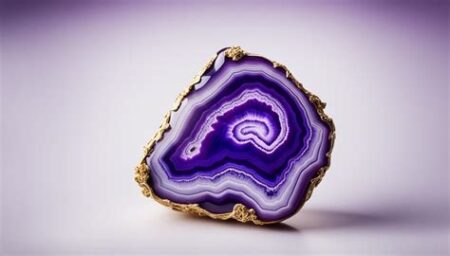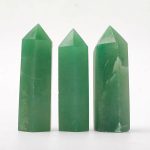Introduction

Soapstone carving, an age-old art form, has captivated hearts and minds throughout history. From intricate sculptures to stunning decorative pieces, soapstone’s unique qualities have inspired countless artists and artisans. This comprehensive guide delves into the fundamentals of soapstone carving, exploring its techniques, benefits, applications, and more.
What is Soapstone?
Soapstone, also known as steatite, is a soft, metamorphic rock primarily composed of talc. Its characteristic softness and soapy feel make it highly pliable and easy to carve. Soapstone’s abundance of colors, ranging from soft greens to deep blacks, adds to its aesthetic appeal.
Techniques of Soapstone Carving
Soapstone carving involves a variety of techniques to create intricate designs and sculptures. Some of the most common methods include:
Basic Carving:
- Using power tools (e.g., grinders, sanders) to remove excess material and shape the soapstone.
- Employing hand tools (e.g., chisels, gouges) to refine details and create intricate cuts.
Relief Carving:
- Creating raised designs or images on a flat surface by removing the surrounding material.
- Techniques include sinking tools and carving insets.
Intaglio Carving:
- Opposite of relief carving, where designs are incised into the surface.
- Requires precise control and careful planning.
Benefits of Soapstone Carving
Soapstone carving offers numerous benefits for individuals and society alike:
Artistic Expression:
- Soapstone’s softness allows for intricate carvings, fostering creativity and artistic expression.
- The variety of colors and textures encourages unique and personalized designs.
Therapeutic Effects:
- Carving soapstone has been found to reduce stress, improve mood, and enhance cognitive function.
- The tactile nature of the process provides a sensory experience that promotes relaxation and mindfulness.
Cultural Significance:
- Soapstone carving has a rich cultural heritage, with artifacts being found in ancient cultures worldwide.
- It preserves traditional techniques and fosters cultural identity.
Applications of Soapstone Carving
Soapstone’s versatility extends to a wide range of applications:
Sculptures:
- From abstract forms to lifelike representations, soapstone is an ideal medium for sculpting.
- Its durability and resistance to weathering make it suitable for outdoor installations.
Decorative Arts:
- Intricate soapstone carvings adorn fireplaces, fountains, and furniture.
- The stone’s natural beauty adds a touch of elegance and sophistication to any space.
Functional Objects:
- Soapstone’s heat retention properties make it ideal for items such as cookware, stoves, and heat sinks.
- Its ability to resist heat and acidic substances also makes it useful for countertops and sinks.
Considerations for Soapstone Carving
While soapstone carving can be rewarding, it requires careful preparation and attention to certain factors:
Dust Control:
- Carving soapstone generates a fine dust that can irritate the respiratory system.
- Proper ventilation and dust extraction systems are crucial for protecting one’s health.
Tool Selection:
- Choose tools specifically designed for soapstone carving, as they offer optimal performance and prevent damage to the material.
Safety Precautions:
- Always wear appropriate safety gear (e.g., eye protection, dust mask) while carving.
- Secure the soapstone and maintain a stable carving surface for safety.
Tips and Tricks for Soapstone Carving
- Start with smaller pieces and gradually increase the size of your projects as you gain experience.
- Use a variety of tools to create different effects and textures.
- Don’t be afraid to experiment with different colors and patterns.
- Practice regularly to improve your skills and develop your carving style.
- Join local carving groups or workshops to connect with other enthusiasts.
Generating New Applications for Soapstone Carving
Embracing innovation can lead to novel applications for soapstone carving. One such application could be:
“Soapstone Energy Storage Blocks”
Utilizing soapstone’s heat retention properties, engineers could create energy storage blocks that can absorb and release heat effectively. These blocks could be implemented in buildings to reduce energy consumption and improve thermal comfort.
Economic Impact of Soapstone Carving
The global soapstone market is expected to reach USD 5.8 billion by 2027, according to Research and Markets. The industry generates significant revenue and employment opportunities in regions where soapstone is mined and carved.
Tables
Table 1: Physical Properties of Soapstone
| Property | Value |
|---|---|
| Mohs Hardness | 1-2 |
| Density | 2.6-2.9 g/cm³ |
| Thermal Conductivity | 2.5-3.0 W/mK |
| Heat Capacity | 1.0-1.2 kJ/(kg·K) |
Table 2: Applications of Soapstone Carving
| Category | Examples |
|---|---|
| Sculptures | Statues, busts, reliefs |
| Decorative Arts | Fireplaces, fountains, furniture |
| Functional Objects | Cookware, stoves, countertops, sinks |
Table 3: Benefits of Soapstone Carving
| Benefit | Description |
|---|---|
| Artistic Expression | Encourages creativity and personalized designs |
| Therapeutic Effects | Reduces stress, improves mood, enhances cognitive function |
| Cultural Significance | Preserves traditional techniques and fosters cultural identity |
Table 4: Tips for Soapstone Carving
| Tip | Description |
|---|---|
| Start Small | Begin with smaller pieces to gain experience |
| Experiment with Tools | Use a variety of carving tools to create different effects |
| Practice Regularly | Improve your skills through consistent practice |
| Join Carving Groups | Connect with other enthusiasts for support and inspiration |




























